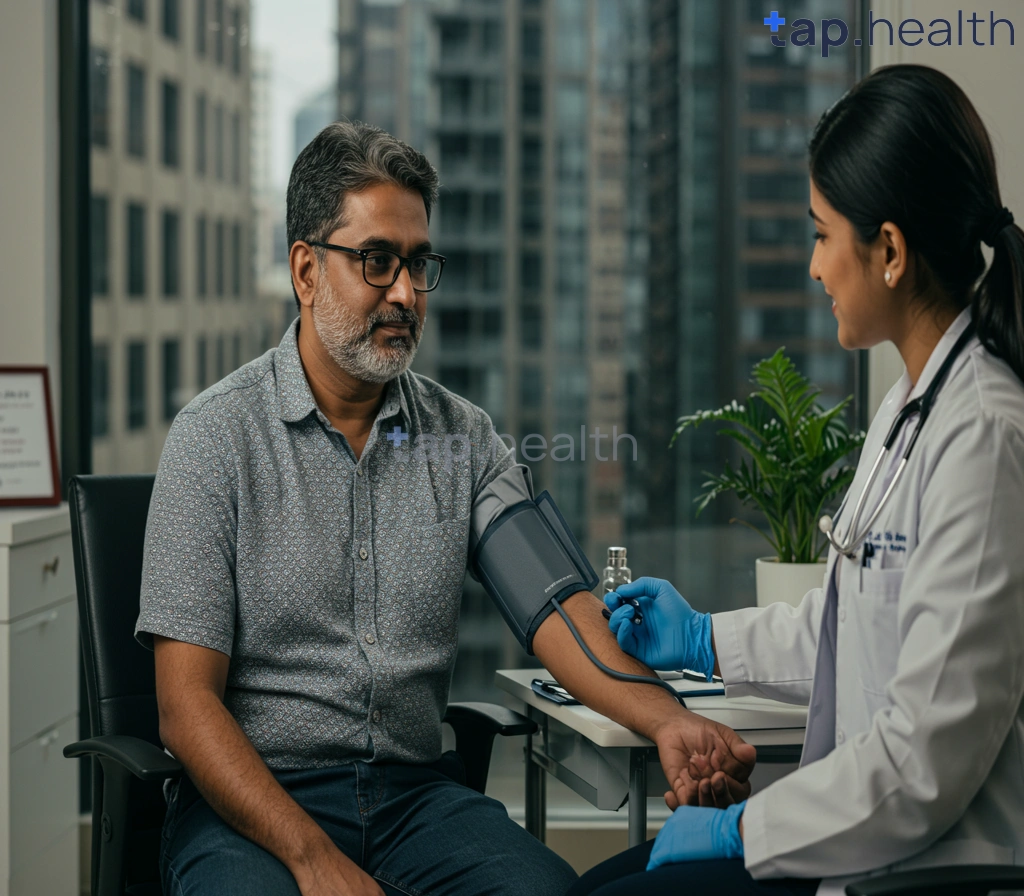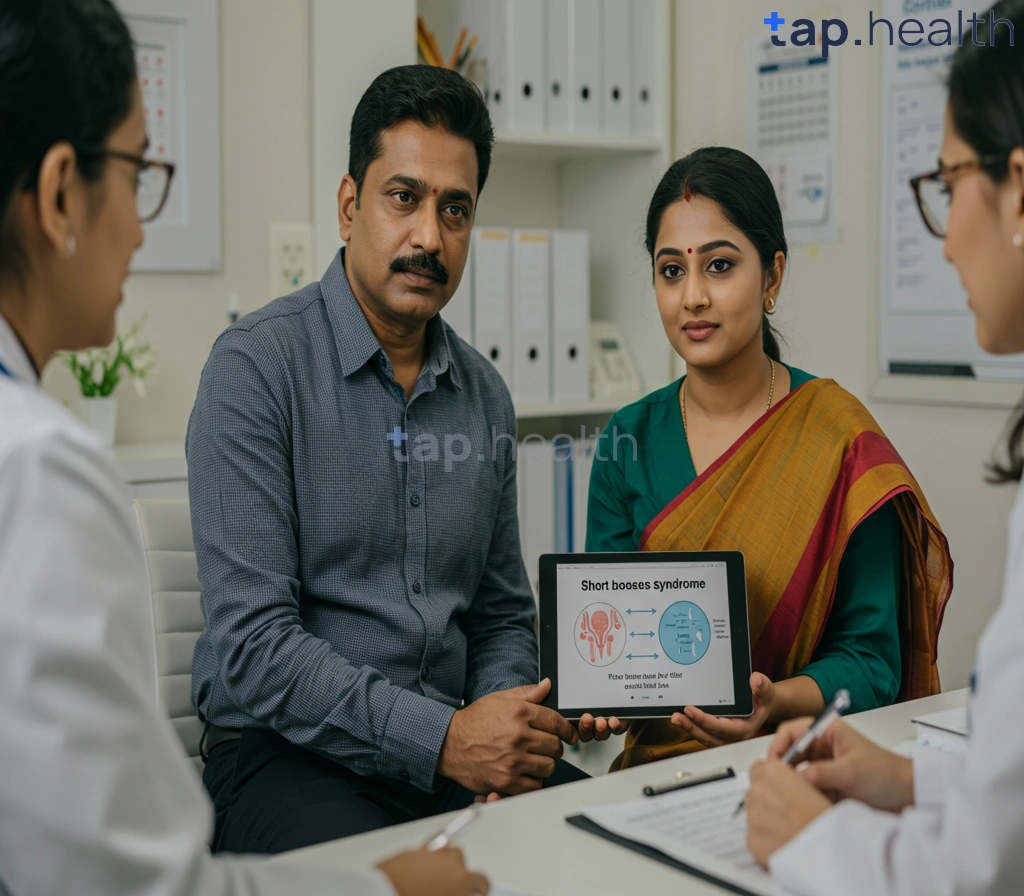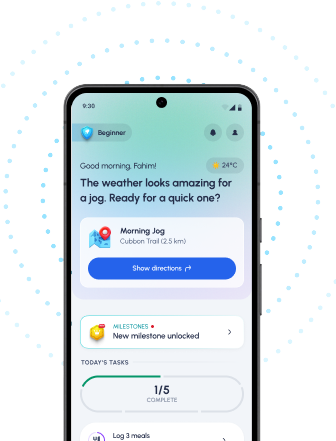Table of Contents
- Understanding Diabetes: A Comprehensive Guide
- What is Diabetes? Types, Symptoms & Diagnosis
- Managing Your Diabetes: Diet, Exercise & Medication
- Living Well with Diabetes: Tips for Daily Life
- Diabetes Prevention: Lifestyle Choices That Matter
- Frequently Asked Questions
- References
Living with diabetes, or even just understanding the condition, can feel overwhelming. There’s so much information out there, it’s hard to know where to begin. That’s why we created this Understanding Diabetes: A Consumer’s Guide to Health Basics. Here, we’ll break down the essentials in a clear, concise, and relatable way. We’ll cover everything from the different types of diabetes to practical tips for managing your blood sugar. Get ready to feel empowered and confident in your approach to diabetes management!
Understanding Diabetes: A Comprehensive Guide
Diabetes affects a significant portion of the global population, with a substantial number falling within the 20-64 age group (61%, according to the IDF Diabetes Atlas). In Indian and tropical countries, where lifestyle changes are rapidly occurring, understanding this condition is crucial for proactive health management. This guide offers essential information for consumers to navigate diabetes effectively.
Understanding the Types of Diabetes
Diabetes primarily manifests in two forms: Type 1 and Type 2. Type 1 diabetes is an autoimmune condition where the body’s immune system attacks insulin-producing cells in the pancreas. Type 2 diabetes, far more prevalent, particularly amongst the 20-64 age group, is characterized by insulin resistance, where the body doesn’t use insulin effectively, or insufficient insulin production. Understanding which type you have is critical for appropriate management. The remaining 39% of individuals with diabetes are aged 65+, and often face added challenges due to age-related health issues. For more on the challenges and solutions related to managing diabetes as you age, see our guide: Managing Diabetes as You Age: Challenges and Solutions.
Managing Diabetes in Tropical Climates
In hot and humid climates common across India and other tropical regions, managing diabetes requires extra precautions. Staying hydrated is paramount to avoid complications. Regular blood sugar monitoring is essential, especially during periods of intense heat, and dietary adjustments may be necessary to account for increased sweating and fluid loss. Consulting a doctor experienced with managing diabetes in tropical environments is strongly advised.
Taking Control of Your Health
Adopting a healthy lifestyle is crucial for managing diabetes, regardless of age or location. This includes maintaining a balanced diet rich in fruits, vegetables, and whole grains, regular physical activity, and maintaining a healthy weight. Remember, early detection and consistent management are key to preventing serious complications. Consult your doctor to discuss a personalized diabetes management plan tailored to your needs and specific regional considerations. Don’t hesitate to seek support from local diabetes organizations or support groups for guidance and community. For simple, proven tips to help you manage your diabetes effectively, check out our guide: 10 Proven Tips to Effectively Manage Diabetes | Simple Guide.
What is Diabetes? Types, Symptoms & Diagnosis
Understanding Diabetes in India and Tropical Countries
Diabetes is a chronic metabolic disorder affecting millions globally. The International Diabetes Federation projects a staggering increase in cases, from 536.6 million in 2021 to a projected 783.7 million by 2045, with prevalence rising from 9.8% to 11.2%. This alarming trend is particularly relevant in India and other tropical countries, where lifestyle changes and genetic predispositions contribute significantly to the rising prevalence of this disease. Understanding diabetes is crucial for early detection and management, especially in these regions.
Types of Diabetes
There are primarily two main types: Type 1 and Type 2 diabetes. Type 1 diabetes, often diagnosed in childhood or adolescence, is an autoimmune condition where the body’s immune system attacks insulin-producing cells in the pancreas. Type 2 diabetes, the more common form, typically develops in adulthood and is characterized by insulin resistance, where the body’s cells don’t respond effectively to insulin. Gestational diabetes develops during pregnancy and usually resolves after childbirth but increases the risk of developing Type 2 diabetes later in life. It’s vital to note that these types manifest differently across various populations, with genetic and environmental factors playing significant roles, particularly in India and tropical countries.
Symptoms and Diagnosis
Common symptoms include increased thirst and urination, unexplained weight loss, increased hunger, blurred vision, and slow-healing sores. However, many individuals, especially in the early stages, experience no noticeable symptoms. Therefore, regular health check-ups, including blood glucose testing, are crucial for early diagnosis, especially for those with a family history of diabetes or risk factors such as obesity and a sedentary lifestyle. Early diagnosis is key to effective management and preventing serious complications common in these regions. For more information on early signs, you can check out this article on 10 Early Signs and Symptoms of Diabetes? – Tap Health. Consult a healthcare professional for accurate diagnosis and personalized treatment plans. Early intervention is crucial for preventing long-term complications. It’s also important to understand the causes of diabetes; learn more by reading Is Diabetes Caused by a Virus or Bacteria?
Managing Your Diabetes: Diet, Exercise & Medication
Managing diabetes effectively in Indian and tropical climates requires a holistic approach encompassing diet, exercise, and medication. Maintaining healthy blood pressure is crucial, with targets generally below 140/90 mmHg, although some guidelines suggest aiming for less than 130/80 mmHg. This is especially important given the prevalence of hypertension in these regions.
Dietary Considerations
Your diet plays a pivotal role. Focus on incorporating fresh, locally sourced fruits and vegetables rich in fiber. Prioritize whole grains over refined carbohydrates, and choose lean proteins like lentils and fish common in Indian cuisine. Managing carbohydrate intake is key to blood sugar control. Be mindful of portion sizes and limit sugary drinks and processed foods prevalent in many tropical countries. Consult a registered dietitian for a personalized diabetic diet plan tailored to your needs and regional food preferences. For more tips on effective diabetes management, check out our blog on 10 Proven Tips for Effective Diabetes Management.
Exercise & Physical Activity
Regular physical activity is essential. Aim for at least 150 minutes of moderate-intensity aerobic exercise per week, incorporating activities suitable to the climate. This could include brisk walking, yoga, or swimming – all readily accessible and culturally relevant in many Indian and tropical countries. Remember to stay hydrated, especially during hotter months. Consult your doctor before starting any new exercise regimen.
Medication Management
Medication, if prescribed by your doctor, is a vital part of managing diabetes. Strictly adhere to the prescribed dosage and timing. Regular check-ups are crucial to monitor your blood sugar levels, blood pressure, and overall health. Open communication with your doctor regarding any side effects or concerns is paramount. In tropical climates, maintaining consistent medication storage to prevent degradation is important. Managing cholesterol is also important when dealing with diabetes; learn more in our article, How to Manage Cholesterol Levels with Diabetes?
Remember, consistent effort in these three areas is key to managing your diabetes effectively and improving your quality of life. Consult your doctor or a diabetes specialist for personalized advice and support.
Living Well with Diabetes: Tips for Daily Life
Managing diabetes effectively in hot and humid climates like those prevalent in India and other tropical countries requires a tailored approach. Maintaining stable blood sugar levels is crucial, especially during periods of intense heat and activity. Remember, proper hydration is key; dehydration can significantly impact blood sugar control.
Dietary Considerations
Carbohydrate intake is a significant factor in blood sugar management. While general guidelines suggest aiming for 45–60 grams of carbs per meal, this is a starting point. Individual needs vary greatly, and consulting a doctor or registered dietitian is crucial for personalized recommendations. Focus on incorporating whole grains, fruits, and vegetables rich in fiber, which helps regulate blood sugar levels more effectively than refined carbohydrates. In hotter climates, consider lighter meals and frequent, smaller portions throughout the day to avoid digestive distress and blood sugar spikes.
Lifestyle Adjustments
Regular exercise is vital, but adjust your routine to the climate. Opt for early morning or late evening walks or workouts to avoid the midday heat. Stay hydrated by drinking plenty of water throughout the day, especially before, during, and after physical activity. Prioritize sleep, as inadequate rest can disrupt blood sugar balance. Consider including traditional cooling practices, such as incorporating cooling spices like cardamom and mint into your diet. For more tips on managing your health while traveling, check out our guide on Traveling with Diabetes: Essential Tips for a Safe & Healthy Journey.
Seeking Support
Living with diabetes requires consistent effort and support. Connect with local diabetes support groups or healthcare professionals experienced in managing the condition in tropical climates. They can offer invaluable advice tailored to your region and lifestyle. Remember, proactive management, including heart health, is key to a healthier and more fulfilling life with diabetes. Learn more about Protecting Your Heart from Diabetes: 5 Essential Steps.
Diabetes Prevention: Lifestyle Choices That Matter
Taking Control of Your Health
Did you know that up to 80% of Type 2 diabetes cases can be delayed or prevented through simple lifestyle changes? This is especially crucial in Indian and tropical countries where diabetes prevalence is rising. Making informed choices about your diet and activity levels can significantly reduce your risk. Prevention is key, and it’s never too late to start.
Prioritizing Healthy Habits
A balanced diet is fundamental to diabetes prevention. Focus on incorporating plenty of fruits, vegetables, and whole grains into your meals. Limit your intake of sugary drinks and processed foods, which are common contributors to weight gain and insulin resistance. Incorporating traditional Indian cooking methods that emphasize fresh ingredients and spices can be incredibly beneficial. Remember portion control – even healthy foods can contribute to weight gain if consumed in excess.
The Importance of Physical Activity
Regular physical activity is another crucial element in preventing diabetes. Aim for at least 30 minutes of moderate-intensity exercise most days of the week. This could include brisk walking, cycling, or even incorporating more movement into your daily routine. Consider activities that are culturally relevant and accessible within your community. Finding enjoyable activities that fit your lifestyle is key to long-term success. If you’re already managing Type 2 diabetes, you might find 5 Easy Lifestyle Changes to Manage Type 2 Diabetes helpful.
Seeking Support and Guidance
Making these changes may seem challenging, but remember you don’t have to go it alone. Consult with a healthcare professional or a registered dietitian for personalized advice tailored to your needs and cultural background. They can provide valuable guidance and support to help you make sustainable lifestyle changes and achieve your health goals. Taking proactive steps towards preventing diabetes is an investment in your long-term well-being. Learn more about preventing Type 2 diabetes through lifestyle changes. For information on avoiding long-term complications, check out How to Prevent Long-Term Complications of Diabetes: Easy Tips.
Frequently Asked Questions on Diabetes: A Complete Guide to Health
Q1. What is diabetes and what are its main types?
Diabetes is a chronic metabolic disorder where the body doesn’t regulate blood sugar effectively. The two main types are Type 1 (autoimmune, less common) and Type 2 (insulin resistance, more common, especially among adults aged 20-64).
Q2. How can I manage or prevent diabetes?
Managing diabetes involves a holistic approach: maintaining a balanced diet with fruits, vegetables, and whole grains while limiting processed foods and sugary drinks; getting at least 150 minutes of moderate-intensity exercise weekly; and adhering to prescribed medication. For Type 2, lifestyle changes can prevent it in up to 80% of cases.
Q3. What are the key benefits of early detection and consistent management?
Early detection and consistent management are crucial for preventing serious complications associated with diabetes. This includes monitoring blood sugar and blood pressure levels regularly.
Q4. What role does diet and exercise play in diabetes management?
Diet plays a vital role. Focus on balanced meals rich in fruits, vegetables, and whole grains, and limit processed foods and sugary drinks. Regular physical activity, at least 150 minutes of moderate-intensity exercise per week, is also essential for managing blood sugar levels and overall health.
Q5. Where can I find support and guidance for managing diabetes?
Support is available from healthcare professionals who can create personalized plans, and local diabetes organizations offering community guidance and resources.
References
- A Practical Guide to Integrated Type 2 Diabetes Care: https://www.hse.ie/eng/services/list/2/primarycare/east-coast-diabetes-service/management-of-type-2-diabetes/diabetes-and-pregnancy/icgp-guide-to-integrated-type-2.pdf
- Your Guide to Diabetes: Type 1 and Type 2: https://www.niddk.nih.gov/-/media/Files/Diabetes/YourGuide2Diabetes_508.pdf




